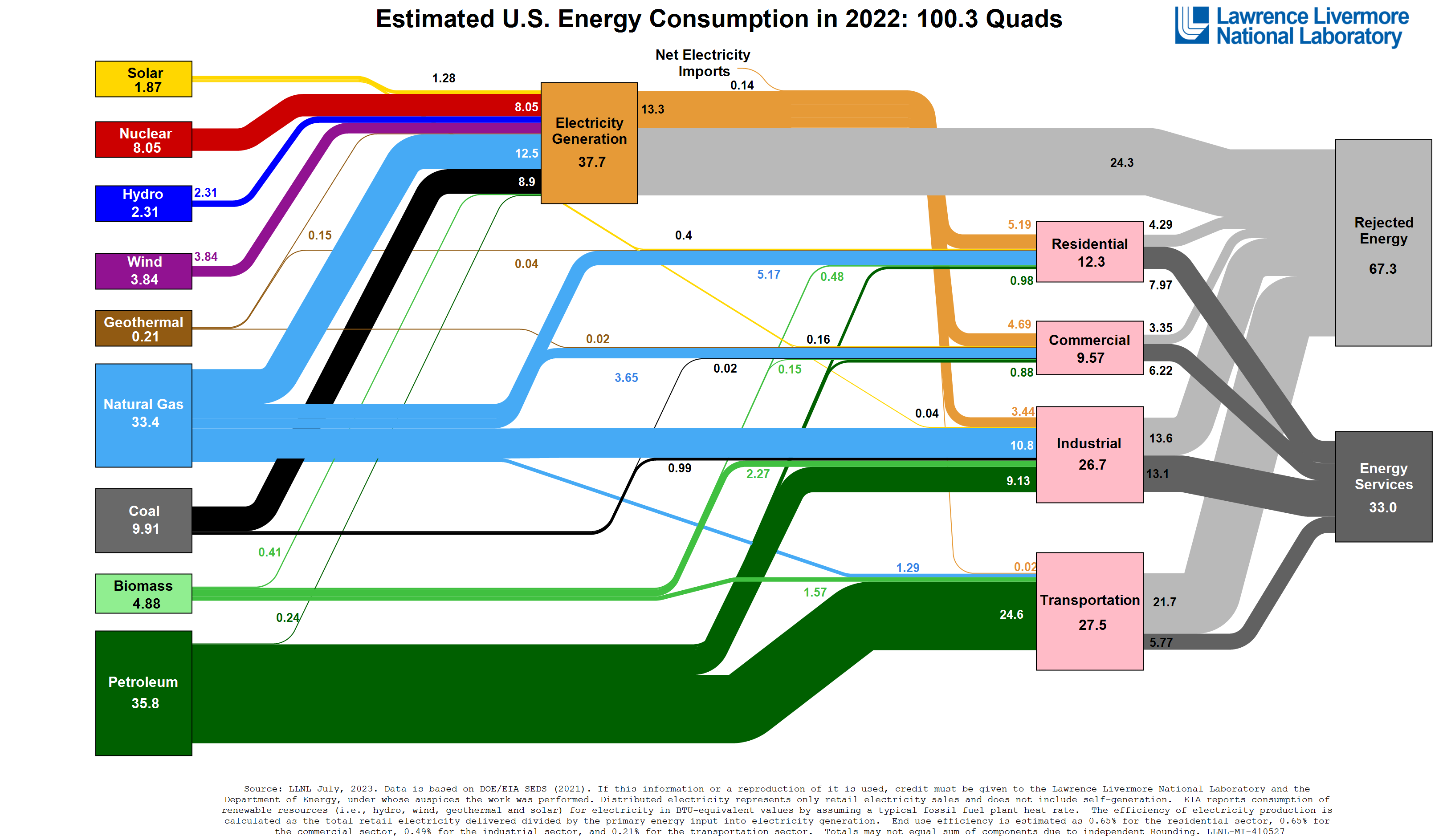In fairness, a typical PV cell is somewhere around 20% efficient at converting solar energy into electricity with the rest lost to heat. The article mentions that renewables are not perfectly efficient either but that their losses do not contribute pollution, making the losses less egregious. I guess the conclusion to draw from this is that if you must burn coal, you should look seriously at cogeneration schemes where you use that heat directly for other purposes such as industrial processes or even municipal heating to get the most out of the energy.
If the solar cell wasn’t there, most of the energy would have ended up as heat anyway. The sunlight was going to hit that patch of earth whether the panel was there or not. Whereas coal that isn’t burnt is avoidable energy release. Photosynthesis efficiency is approximately 3-6%. So panels in total likely release less heat than forest which has an albedo approximately 10-20%. Albeit a forest releases a bunch of the heat in water vapor which drastically decreases the temperature rise from the heat.
A high albedo surface like fresh snowpack would be optimal for avoiding heating, but I doubt panels produce more warming than the average surface they cover.
That’s some food for thought. Would a field covered in panels be warmer or cooler than the same field without? On the one hand, the albedo of a panel is super low. That’s sort of the point as they don’t want any of the sunlight lost. On the other hand, the panels are thin and have little heat retention, so one would expect them to shed whatever heat they build up during the day quickly at night compared to the ground. I suspect the shading effect on the ground would win out in the end, but I’m not sure?
Heat dissipation is an issue for solar panels, to the extent that some have tried deploying floating panels on a lake to get a better cooling effect from the water. Water bodies already have extremely low albedo, so the panels would likely have little effect in that regard. I suppose they might reduce evaporative cooling depending on how thorough the coverage is?
There is also research into materials with radiative cooling properties and whether these can be combined into PV cells. Radiative cooling exploits the infrared transparency of the atmosphere at certain wavelengths that thankfully aren’t being blocked by greenhouse gases. I think this is a great idea and could reduce urban heat islands and save energy on A/C in hot climates, essentially for free.
For a person / creature being in the shade will always be cooler, so a field of grass vs solar panels the panels are cooler, now a forest vs solar panels. The forest would likely be cooler, since you get the shade plus the above mentioned moisture release cooling.
Harvard Researcher Ye Tao discussed using mirrors in farm fields for heat management of the soil/earth. He said you get similar results with solar panels, but his focus is combating earth temperature rise which is cheaper to do with mirrors than panels, making them a situationally better idea depending on the needs of a given place. Full interview by David Robberts (Volts) here https://www.volts.wtf/p/volts-podcast-dr-ye-tao-on-a-grand
That’s ok; that sunlight would have hit the earth anyways. Solar installations are optimized for minimizing price per kwh, not for optimizing use of solar energy.
Renewables also have the advantage of not turning our planet into an Easy Bake oven, and not destroying people’s respiratory/genetic/general health like coal does. The coal lobby is basically the only thing keeping coal around when so many better alternatives exist (which is every modern alternative).

This looks cool but is meaningless. waste heat is a very, very small problem.
It’s meaningful because charts showing “primary energy” include waste heat, so you only need to replace ~1/3 of primary energy with renewables to fully replace its use.
what charts are using primary energy? the only useful metric is energy we can actually use, and all statistics I know generally compare emissions per kWh of electricity, not primary energy.
We don’t take inti account the energy of the sun for calculating solar energy either.
The ones I’ve seen people using in online discourse are these which mislead the heck out of people trying to figure out how much work is needed for displacing fossil fuels.
Oh wow, that is terrible and disapointing. Then again, when you think about it, it does mean the corrected graph gives us more hope.
huh, interesting!
If we did then solar energy would be the most ridiculously inefficient energy source on Earth. Only 0.000000045% of the Sun’s energy even hits Earth at all.
Though now that I think of it, uranium comes from supernovae and neutron star mergers. So nuclear power might be even less efficient.
If you look around, there are tons of people who claim that all of the primary energy used today needs to be provided by renewables in the future (and that that’s impossible).
It looks also like this graph is completely ignoring the fact that the excess heat is actually used to heat up homes (at least in Finland), making the process of burning coal way more efficient.
That said, renewables are obviously still better on the climate, and should be heavily invested to.
I can say that in the US, such use of waste heat is fairly uncommon
Look at all that rejected energy…

“Energy contained in coal” doesn’t make any sense. Is it “energy we could get from burning coal if it was 100% efficient”? “Energy we could get from coal if we could use it in a nuclear reaction”?
Coal (anything) doesn’t “contain” energy. We can transform some things, and some transformations produce energy in some form or another.
The upper line of this graph should be labeled “total energy liberated by burning coal” and the lower one “useful energy liberated by burning coal”.
I think it’s referring to the yellow-shaded portion between the energy contained and energy gained. The energy contained is the potential chemical energy that is released when burning in the form of heat. We can only harness so much of that energy as no system is flawless like the theoretical Carnot engine. The theoretical amount you can gain compared to amount actually captured is the efficiency, so this graph is meant to highlight how inefficient coal burning is.
And while, on paper, renewable energy is less efficient in that a smaller percentage of energy can be captured, we are also not losing something in exchange for that inefficiency since there is no fuel involved. We just get less than we’d like. Everything not captured from burning coal is not just a waste of resources, but also adds things that are a detriment to the environment like greenhouse gases. It’s harder to get as much from renewable sources, but they’re also not making the problem worse at anywhere near as big a scale.
The graph is poorly labeled, as it should only refer to the gap, but implies the full value of energy contained instead of the difference between energy gained and electricity obtained. But I think it’s valid
Coal (anything) doesn’t “contain” energy. We can transform some things, and some transformations produce energy in some form or another.
Akstchually energy is a property of matter, or matter is a property of energy, whatever 🤓 but your point still stands




